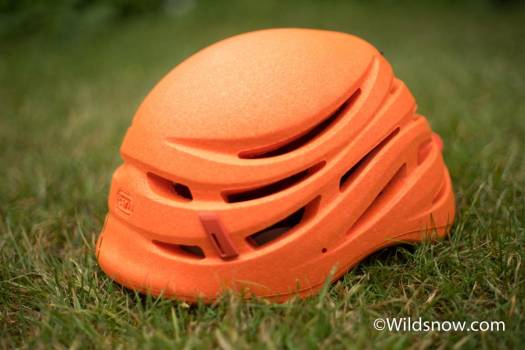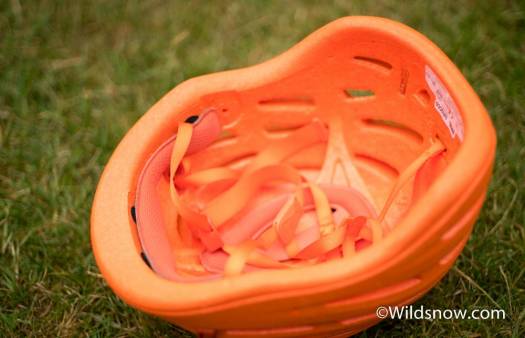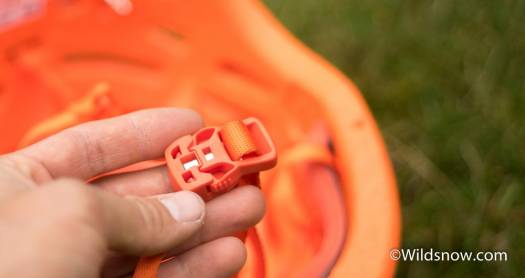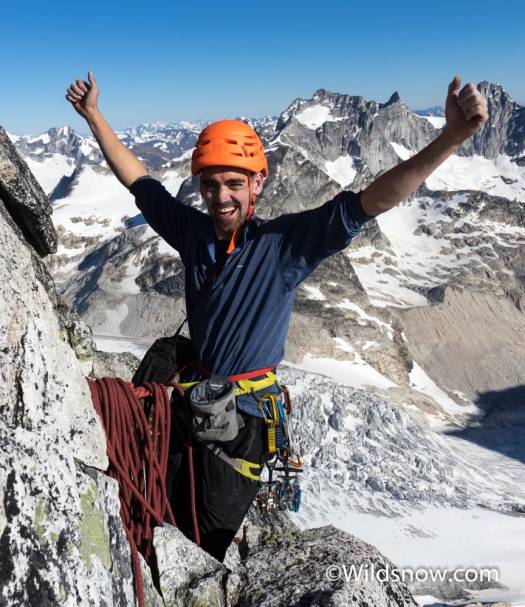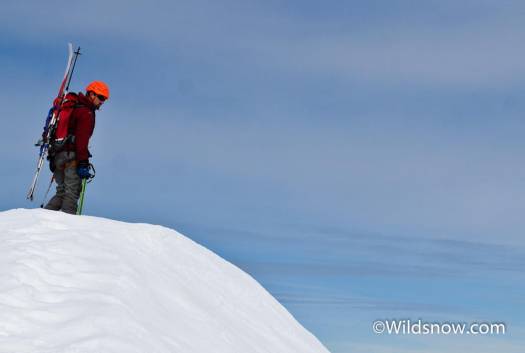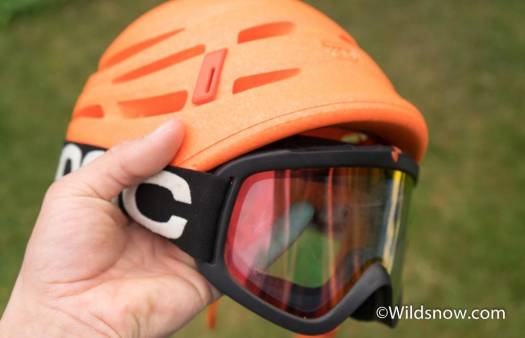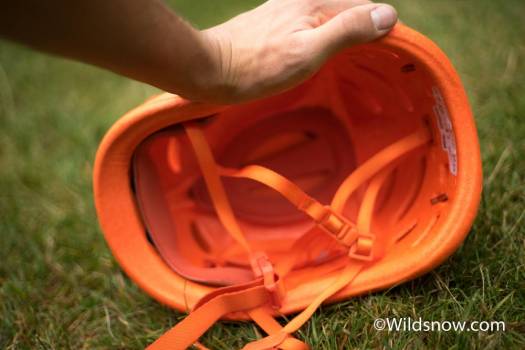Ski helmets are designed for protection during the winter when they guard against head impact during falls and perhaps other hazards (e.g., other riders). However, during the spring I tend to switch over to a climbing helmet; it’s lighter, cooler, and is purposefully designed for protection in the event of impact with rock, all important concerns for much spring ski mountaineering.
For years I’ve been using an older hard shell climbing helmet for its durability and simplicity. However, with ski helmets becomming lighter, my POC ski helmet is actually lighter than my old hard shell climbing helmet. It became clear that I needed a lighter climbing helmet. For years I’ve been hesitant about foam helmets as they are fairly fragile, and a dent or ding could compromise the safety of the helmet. I’ve seen several people climbing in foam helmets that are beat up and probably should be retired.
Petzl’s Sirocco helmet came out last year and is a new take on the foam climbing helmet. Expanded polypropylene (EPP) foam, commonly used in car bumpers, makes the helmet light and durable. The foam gives the helmet a funny orange color but makes it one of the lightest climbing helmets out there at 165 grams. Other than the fancy material, the helmet is quite simple. The strap and adjustment system just has two points of adjustment (under the chin and behind the head). The Sirocco only has a minimal amount of padding, which can be removed for cleaning.
A few months ago, the mailman dropped off a cardboard box with a strange orange glow emanating from the seams, and since then I’ve used the Sirocco for skiing after the weather got too warm for my normal ski helmet. I’ve also used it on some alpine rock climbing trips in Washington and Canada. However for cragging I’ve left the helmet at home in favor of my more durable hard shell climbing helmet.
The light weight of the helmet is of course the first thing you notice (or perhaps the dayglow orange color!). Lack of weight is its main advantage and selling point. It is barely noticeable while you wear it, and helps keep pack weight down significantly on approaches. The thin straps and low profile of the helmet also make it nice and small for packing. (However, on many trips I use a external net helmet carrier, so storage size isn’t a big issue for me). Also, although the helmet isn’t made for skiing, it has a few features that allow it to adapt to the role relatively well. The main useful feature is a stretchy cord on the back of the helmet intended for securing headlamps. The cord is big and strong enough that it works well for holding goggles on the helmet, score! It should be noted, however, that the Sirocco is not certified as a ski helmet, so it’s probably not designed to protect as well from the back and side impacts you might encounter in a skiing fall.
Another big advantage of the Sirocco has to do with the EPP material. Unlike the foam most other helmets are made out of, the EPP is slightly soft and squishy. This allows it to be slightly more durable, as well as a bit easier to pack. If the foam is hit or dented slightly, it has the ability to “spring back”, if the hit is small enough. A cool demonstration of the material can be seen in this video: https://www.youtube.com/watch?v=Dmn94J2_AXo
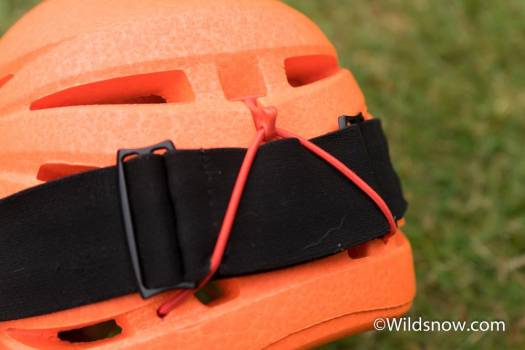
Detail of the elastic designed for securing a headlamp. Works well for ski goggles too. Crucially, it’s also quick and easy to operate with one hand while the helmet’s on your head.
Of course, being a foam helmet without a shell, durability is still a concern with the Sirocco. I haven’t used the helmet a ton, and I already put a small divot in it from carelessly packing it next to my ski bindings during air travel. The divot isn’t in a critical location (on the lower rim of the helmet), so I’m not concerned, but it’s definitely a reason to be more careful in the future. So far I’ve been conscious of not throwing the helmet in a bag with hard edged gear, mostly using an external helmet net carrier on my backpack. Also, I still use a older hard-shell helmet for cragging, when durability is more of a concern than weight — and I use a certified hard shell ski helmet for my day-to-day skiing in the winter. I might be over thinking all this, as the Sirocco is designed to be one of the more durable foam helmets out there. But better safe than sorry when it comes to damaging a piece of safety equipment like a helmet.
There is only one color option for the Sirocco: bright orange. For the more fashion conscious out there, a major concern. If looking good at the local crag is your main concern, and you don’t have Cheeto sponsorship, this orange dome might not be the choice. I’ve gotten responses that range from outright laughter, to whether I got the helmet at Toy’s R Us, or Cabelas. However, to those in the know, it’ll be obvious from miles around that the guy with the glowing orange head has one of the raddest, lightest climbing helmets out there. According to Petzl, the color is dictated by the automotive industry, and that’s who uses 99.9% of EPP foam, hence the high-visibility orange. But hey, at least I won’t get shot during hunting season. (If these helmets become popular, an easy solution for color would be some sort of thin fabric cover.)
The Siroco sits comfortably on your head, and you can’t even see the orange color (apart from the faint glow on the rocks around you). The helmet has proven to be a worthy pick for both skiing and alpine climbing. The lightness alone is reason enough to use it, and the other well-thought out features are a bonus.
Shop for Petzel Sirocco helmet here.
Louie Dawson earned his Bachelor Degree in Industrial Design from Western Washington University in 2014. When he’s not skiing Mount Baker or somewhere equally as snowy, he’s thinking about new products to make ski mountaineering more fun and safe.

